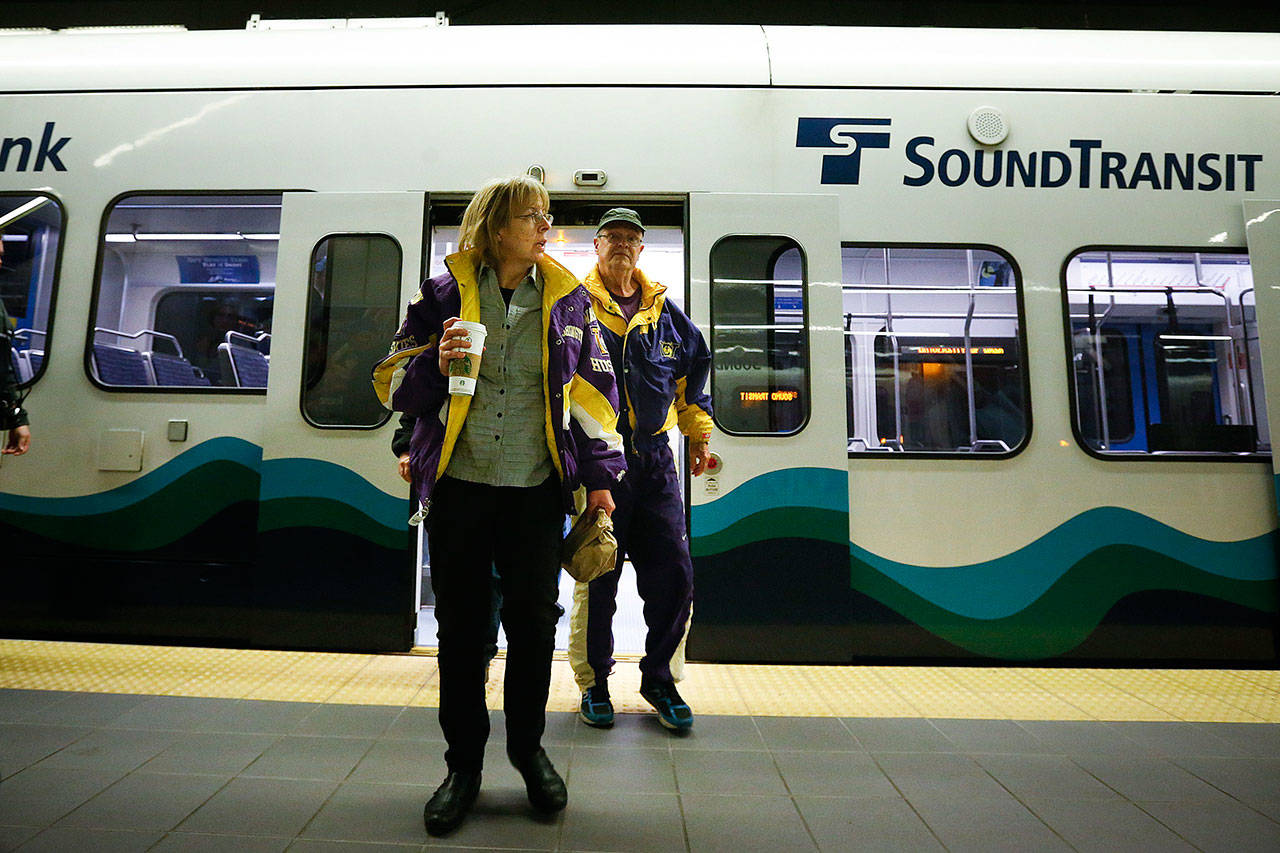By Paul Roberts, Dave Earling and Dave Somers
We have heard repeatedly from our constituents who live in the Sound Transit district that they care about three things: having more mass transit options that get them out of their cars; minimizing taxes; and completing the light rail spine (including Everett) as quickly as possible.
The passage of the ST3 package provided sufficient tax revenue to get light rail to Everett. However, the timeline remains too long, considering Everett has some of the worst traffic in the United States. While Sound Transit was created to serve the transportation needs of the Puget Sound region, it is not prioritizing the completion of the spine.
Currently, Sound Transit funds projects based on a policy known as subarea equity. This means projects in a given subarea are funded by revenue generated from that subarea or must borrow from another to meet project needs. There are five subareas: Snohomish County, North King County (including Seattle), South King County, East King County (including Bellevue) and Pierce County. Of these, Snohomish County is the smallest, generates the least amount of revenue, yet experiences the worst congestion.
There are a number of challenges with this policy.
First, subarea equity prioritizes project funding based on the financial capacity of a given subarea rather than the transportation needs of the region. The dynamic forces shaping the Puget Sound region do not respect the subareas’ artifical boundaries. People don’t live and work in subareas.
Every day tens of thousands of people move across the region to get to their jobs and home again. They cross county and city boundaries in traffic that each year are less predictable, with longer commute times than the year before. In the past four years, commute times have almost doubled. Most people are expected to be at their jobs on time, but their ability to do so is increasingly less certain. Also of great concern is the fact that congestion slows the movement of goods and services essential to our economic health.
Second, the red hot Puget Sound real estate market is driving up housing costs, decreasing affordability and increasing traffic congestion. As families are priced out of Seattle and the Eastside, they find affordable housing further away in Snohomish and Pierce Counties.
These families now experience the struggle of economic flight, trading lower housing costs for longer commute times. Today, Snohomish and Pierce counties are among the fastest growing counties in the nation, and it is “normal” for Snohomish County commuters to spend more than three hours a day in their cars. While the burden of cost is heaviest on lower income families, the burden of time wasted in traffic weighs on all of us and the Puget Sound economy.
Third, the poorest areas of the Puget Sound region are South King County and parts of Snohomish and Pierce Counties as well as Everett. These generate the least amount of revenue in the Sound Transit taxing district. The people who arguably depend on mass transit the most live in areas least able to afford building the transit system they need. Subarea equity penalizes those areas with the poorest socio-economic trends.
Fourth, as the smallest subarea, Snohomish County is the most vulnerable to disruptions in revenues because of economic downturns or increases in Sound Transit project costs. Recently, Sound Transit finance models show the agency’s bonding capacity following an economic downturn could be exhausted before completing all of the ST3 projects, leaving no capacity for those projects with later completion dates, with potential impacts to the line to Everett.
The remedy for equitably meeting the transportation needs of the Puget Sound region is to change the funding policy from one based on strict subarea equity to something based on priority funding and objective criteria. This is similar to how projects are funded under state and federal transportation programs elsewhere in the U.S.
In 2015, the Sound Transit’s board or directors adopted “ST3 Core Priorities” intended to shape the funding package.
First among them was completing the Link Light Rail spine connecting Seattle, Tacoma, Everett and Bellevue, followed by prioritizing ridership and socioeconomic equity. However, the Core Priorities did not replace subarea equity. It is time they did.
As your boardmembers, we will continue to do what is best for the Puget Sound region and residents of Snohomish County.
Paul Roberts is an Everett City Council member. Dave Earling is mayor of Edmonds. Dave Somers is Snohomish County executive. All three are members of Sound Transit’s board of directors.
Talk to us
> Give us your news tips.
> Send us a letter to the editor.
> More Herald contact information.

























